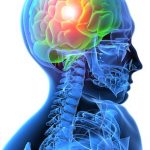 Each May, we recognize Stroke Awareness Month with much-needed reminders for stroke prevention. According to the National Stroke Association, 80% of all strokes can be prevented. Following the stroke prevention guidelines below may help you lower your risk.
Each May, we recognize Stroke Awareness Month with much-needed reminders for stroke prevention. According to the National Stroke Association, 80% of all strokes can be prevented. Following the stroke prevention guidelines below may help you lower your risk.
Stroke Prevention Guidelines
• Get your blood pressure checked annually by your personal physician, and even more often at health fairs or if offered by your local pharmacy
• Know if you have atrial fibrillation (“A-fib”) and follow treatment guidelines. A-fib is an abnormal heartbeat that increases stroke risk by 500%. A-fib can cause blood to pool in the heart and form a clot, which can lead to stroke.
• Stop smoking.
• Control alcohol use. Heavy consumption of alcohol has been linked to stroke.
• Control diabetes.
• Exercise. It improves cardiovascular heath and can lower weight.
• Transient Ischemic Attacks (TIA) — Recognize if you have had one. People who have had a TIA , often called a “mini stroke,” are more likely to have a full stroke later on.
If You Do Have a Stroke
Not All Strokes Are the Same
If you (or a loved) do, in fact, suffer a stroke, know that all strokes are not created equal. There are two types: ischemic (a clot) or hemorrhagic (a bleed). Problems a person experiences as a result of stroke depend on which area of the brain is affected and how extensively.
For example, if the stroke (or lesion) is located in the left hemisphere of the brain, the person could experience weakness or paralysis on the right side of the body, and vice versa. Many different conditions could occur as a result of the stroke and its location, including perceptual visual disturbances, poor judgment, decreased attention span, language difficulty, cognitive (thinking, reasoning or memory) deficits, emotional liability (rapid, often exaggerated changes in mood) and even depression.
Stroke Rehabilitation
Recovery for many stroke survivors involves rehabilitation of some kind. Your stroke rehab team is there to tackle these problems and help you and your loved ones work toward improvement. Together, you will set realistic rehabilitation goals. It is important to go to acute rehabilitation, which generally offers 3 hours of therapy (not consecutive) for about 5 days a week.
Because rehabilitation provides a holistic approach, members of the patient’s rehab team will include a physiatrist (doctor who specializes in physical medicine and rehabilitation); physical, occupational and speech therapists; and rehabilitation nurse, social worker and dietitian.
As the National Stroke Association says, “Stroke survivors and their families can find workable solutions to most difficult situations by approaching every problem with patience, ingenuity, perseverance and creativity.”
